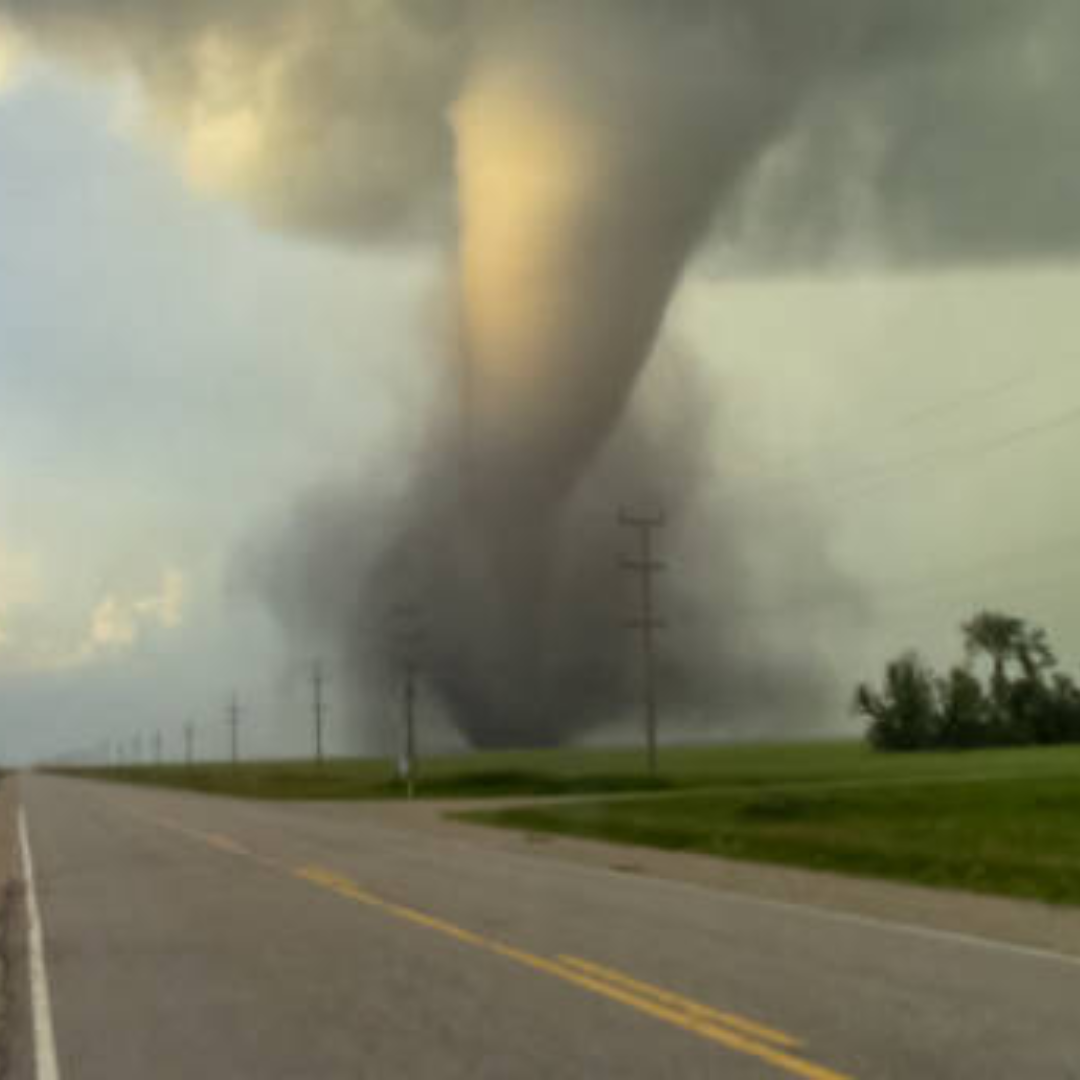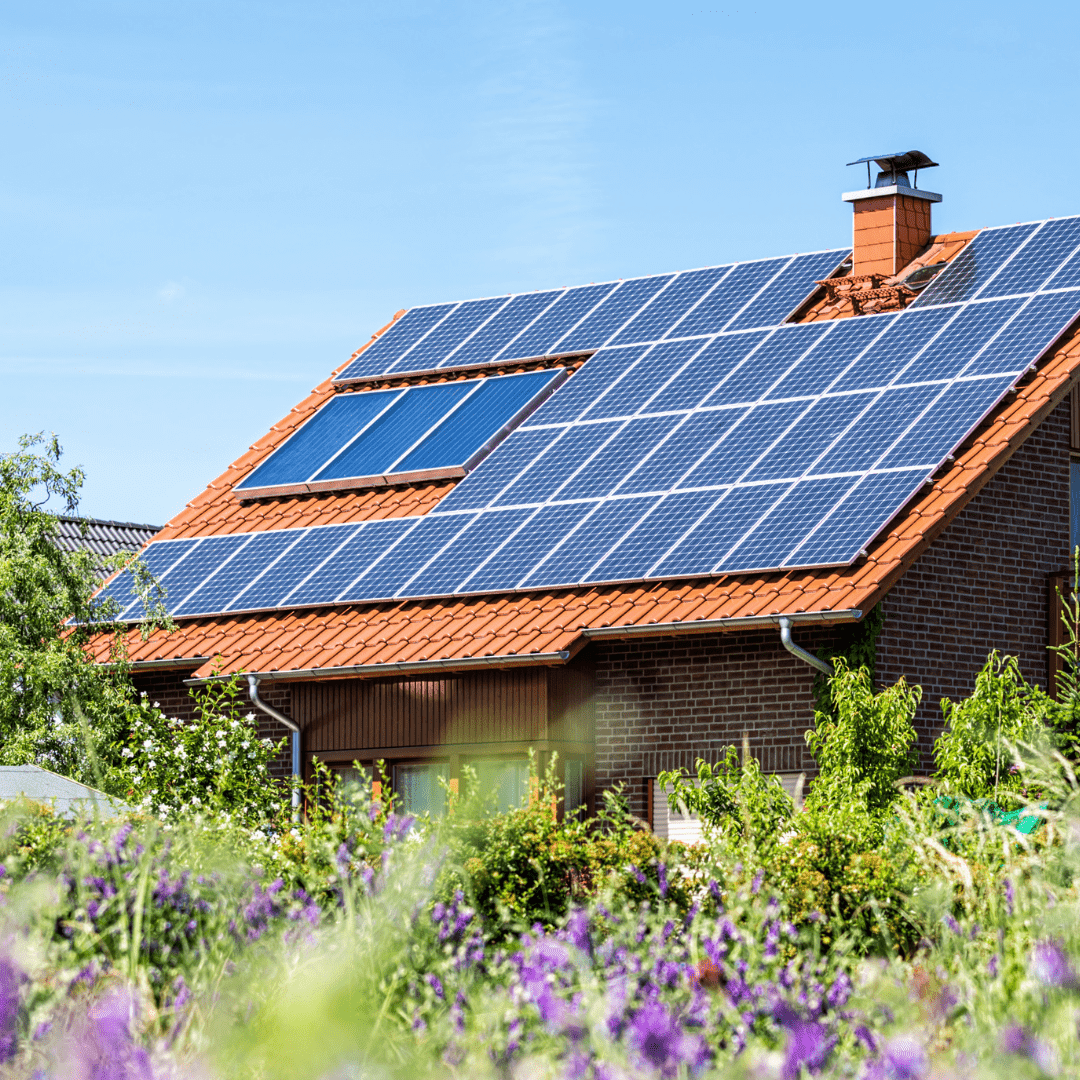Tornado tornado warning.
- Tornado Alley In 2024 Is Roaring with a Vengence!
- Understand the Basics of Tornadoes
- Create a Tornado Safety Plan
- Build a Tornado Emergency Kit
- Identify Safe Shelter Locations
- Stay Informed and Alert!
- Practice Drills and Preparedness
- Stay Calm and Take Immediate Action!
- Tornado Watch vs. Tornado Warning: What's the Critical Difference?
- After the Tornado Passes
- Conclusion
- Frequently Asked Questions
- Summary
Tornadoes are nature’s most violent storms, striking with little warning and leaving a path of destruction in their wake. Knowing how to stay safe during a tornado is essential, especially if you live in a prone area. This guide offers a compass to navigate the tumultuous moments of a tornado warning, providing survival tips that could save lives.
From preparing an emergency kit to identifying safe shelter locations, let’s demystify the steps to ensure safety during these unpredictable storms. Together, we’ll explore how to brace for impact, shield yourself and loved ones, and emerge safely when the danger has passed.
This is a pinnable post. Tap or hover over any image in this post to pin to your Pinterest Boards.

Tornado Alley In 2024 Is Roaring with a Vengence!

As I sit here writing this post today, I hear the ambient sounds of the news station on my television talking about the current tornados that are happening in various states. Tornado Alley has been roaring loudly and with a vengeance this year in 2024. At the time of writing this post, the United States has had 437 confirmed twisters and we are only 5 months into the year!
My home state is Ohio, which has had 54 tornadoes so far this year! And with these scary numbers of confirmed twisters on our radars, it is extremely wise that we take action and become better prepared now!
Understand the Basics of Tornadoes

Tornadoes, often depicted as ferocious twisters, are nature’s most erratic and powerful storms. They form under specific conditions: When warm, moist air collides with cool, dry air, leading to thunderstorms that can spawn tornadoes.
These funnel-shaped clouds pack winds that can exceed 300 miles per hour. They’re unpredictable, striking with little warning and leaving a path of destruction. It’s crucial to grasp that while tornadoes are more common in “Tornado Alley” in the US, they can occur almost anywhere!
Tornadoes Are Unpredictable!
I am from Ohio, which is prone to tordadoes, but I am currently living in Utah, which is not in Tornado Alley or prone to tordnadoes. To confirm that tornadoes can strike anywhere they please, including cities like mine surrounded by huge mountainous terrain, a tornado touched down in Salt Lake City, Utah in 1999. Another tornado hit the city I lived in where I was caught out in the storm in Riverdale, Utah on September 22, 2016. I was driving around town with my kids when all of a sudden we noticed a parking lot full of grocery carts from Walmart and Sam’s Club were headed toward us in a nearby round-a-bout where we were cut off from going any further.
We were so close to our home that I and other drivers were working hard to clear the road of the grocery carts and downed trees so we could get out of there! By the way, my cell phone got ruined that day! It was no good in the emergency I found myself in that day as I had it out in the pouring down wall-like rain from the tornado’s storm. I should have kept it inside my vehicle! In a raging panic, I took it out in the storm with me while clearing the road.
Know the Signs of a Tornado Approaching!
Recognizing the signs—dark, often greenish sky, large hail, a loud roar similar to a freight train, and a calm after the storm front—can be lifesaving. Understanding these basics isn’t about instilling fear; it’s about empowering you with knowledge to ensure your safety.
Create a Tornado Safety Plan

Having a solid tornado safety plan is like holding a map during a journey; you know where you’re heading, especially when every second counts. Sit down with your family or housemates to discuss and frame this life-saving blueprint. It’s vital to tailor your plan to the specific needs of each person in your household.
- Designate a Safe Room: Pick the safest room in your house, typically a basement, storm cellar, or an interior room on the lowest floor with no windows.
- Communication Is Key: Ensure everyone knows how to get in touch if you’re separated. Choose an out-of-town contact person who can relay messages among group members.
- Escape Routes and Meeting Points: Map out clear paths to safety within your home. Also, establish a meeting point outside your home in case it’s unsafe to stay or you get separated.
- Support Needs Attention: Consider the needs of pets, older people, or anyone requiring special care. Ensure they can get to the safe spot quickly or have needed supplies.
This plan is not a one-time discussion; it requires regular reviews and updates. Run through this safety plan a few times a year so that, when warnings blare, your readiness turns into a reflex!
Build a Tornado Emergency Kit

Imagine you’re huddled in your safe spot with the wind howling outside. You want to ensure you have everything you might need, right? That’s where a tornado emergency kit comes in handy. Think of it as your survival box.
Start with essentials: water, non-perishable food, a flashlight, extra batteries, a first-aid kit, and personal hygiene items. It’s like packing for a camping trip, but at home. Don’t forget to include important documents in a waterproof container – think IDs, insurance documents, and banking info.
A battery-powered or hand-crank radio can be a lifesaver to stay informed. Throw in some blankets or sleeping bags for comfort. Charge up a spare power bank as well, so your phone doesn’t die on you.
Just remember, this kit isn’t a one-size-fits-all. Tailor it to your family’s needs, including pets! Keeping your kit updated and ready means one less thing to worry about when the skies turn dark.
Here’s a Detailed List to Help You Assemble Your Tornado Warning Kit
- Water: Store at least one gallon of water per person per day for at least three days, accounting for drinking and sanitation needs.
- Non-Perishable Food: Include a three-day supply of non-perishable food items such as canned goods, energy bars, and dried fruits.
- Manual Can Opener: Ensure you have a manual can opener to access canned food in case of power outages.
- First Aid Kit: Assemble a comprehensive first aid kit containing bandages, antiseptic wipes, adhesive tape, scissors, tweezers, pain relievers, and any necessary prescription medications.
- Flashlight: Include a flashlight with extra batteries or a hand-cranked flashlight to provide illumination during power outages.
- Battery-Powered or Hand-Crank Radio: Have a battery-powered or hand-crank radio to receive weather alerts and updates from local authorities.
- Emergency Whistle: Include an emergency whistle to signal for help if needed.
- Personal Hygiene Items: Pack personal hygiene items such as soap, hand sanitizer, toothpaste, toothbrushes, feminine hygiene products, and moist towelettes.
- Multi-Tool or Knife: Include a multi-tool or knife for various utility purposes.
More Items to Include In Your Tornado Warning Kit
- Blankets or Sleeping Bags: Have blankets or sleeping bags to keep warm in case of displacement or loss of heating.
- Extra Clothing: Pack extra clothing, including sturdy shoes, socks, and weather-appropriate attire.
- Important Documents: Store copies of important documents such as identification, insurance policies, medical records, and contact information in a waterproof container or sealed plastic bag.
- Cash: Keep some cash in small denominations for emergency purchases or transactions.
- Emergency Contact Information: Create a list of emergency contacts, including family members, friends, and local authorities.
- Maps: Include local maps and evacuation routes in case you need to evacuate your area.
- Pet Supplies: If you have pets, pack food, water, medications, and other supplies they may need.
- Baby Supplies: If you have infants or young children, include diapers, formula, baby food, and other necessities.
- Entertainment: Consider adding items such as books, games, or puzzles to keep yourself and your family occupied during downtime.
- Support Needs Items: If you or anyone in your household has specific medical needs or disabilities, ensure you have the necessary supplies and equipment.
- Personal Identification and Photos: Include copies of personal identification and recent photos of family members in case of separation.
Regularly review and update your tornado emergency kit to ensure all items are in good condition and meet the needs of your household. Keep your kit in a designated, easily accessible location, and ensure all family members know where it is located. Additionally, familiarize yourself with local tornado safety procedures and evacuation routes to stay prepared for any situation.
Identify Safe Shelter Locations

Finding the right spot to hunker down during a tornado can be a game-changer. It’s all about avoiding windows and getting as low as possible. Your go-to? A basement or a small, windowless interior room or hallway on the lowest floor of your building. No basement? No problem. Look for storm cellars or designated safe rooms nearby.
If you’re caught in a building like a mall or an office, head for the center, away from glass and wide-span roofs. Mobile homes aren’t a safe bet; if you’re in one, find a sturdier shelter ASAP.
If you live in Tornado Alley, I highly suggest investing in your own home storm shelter! I am sure you know if you are in Tornado Alley or not. Just in case you are unsure, check out this website for more information!
States That Are In Tornado Alley!
Remember, your shelter spot should be easily accessible and familiar to all household members. Planning ahead could make all the difference when time is of the essence!
Stay Informed and Alert!

In the whirlwind of our daily lives, staying updated on weather conditions can sometimes slip through the cracks. Yet, during tornado season, this vigilance can significantly morph from a routine check-up into a life-saving habit.
Empower Through Information
- Use Apps and Alerts: Leverage technology by using weather apps that send real-time alerts. You don’t just want any app, though; look for ones recommended by meteorologists.
- Tune Into Local News: Old-fashioned? Perhaps. Reliable? Absolutely. Local news stations have a pulse on imminent weather threats and can offer insights specific to your area.
- Weather Radios: A NOAA Weather Radio is your best friend during severe weather. It’s designed to work even when other communication channels fail.
The mantra here is simple: The more informed you are, the better prepared you’ll be! Let’s make checking the forecast as habitual as your morning coffee, ensuring that when the skies darken, you’re already a step ahead!
Practice Drills and Preparedness
Ever rehearsed escaping a room blindfolded? Practicing tornado drills might feel a bit like that—slightly odd yet potentially life-saving. Plan a family tornado drill at least once a year to ensure everyone knows exactly where to go and what to do when a tornado warning is issued.
Make it engaging, perhaps with a touch of playfulness to keep the young ones interested, but emphasize the seriousness of the exercise. Remember, this isn’t just about running to the safe spot; it’s about making sure everyone knows how to act quickly and efficiently, even if they’re home alone. Drill variations, like simulating blocked paths, can add realism and prepare your family for multiple scenarios. It’s a mix of serious preparation wrapped in a calm, methodical approach. Stay prepared, stay safe!
Stay Calm and Take Immediate Action!

When a tornado warning is issued, it’s like the world stands still, but inside, your heart might be racing. Keeping a clear head is your best tool. First, deep breaths; panic is the enemy. Then, swiftly and calmly, move to your designated shelter spot. Whether it’s a basement, an interior room without windows, or a storm cellar, every second counts!
Quickly grab your emergency kit if it’s on your way. Remember, things can be replaced, but you and your loved ones cannot. Keep a battery-powered radio with you to stay updated on the tornado’s progress. Time is of the essence, but your safety is paramount. Now is not the moment for heroics, it’s the time for smart, decisive action. Stay put until it’s clear the threat has passed!
Tornado Watch vs. Tornado Warning: What’s the Critical Difference?

Understanding the distinction between a Tornado Watch and a Tornado Warning is crucial for staying safe during severe weather events.
A Tornado Watch
A tornado watch indicates that weather conditions are favorable for tornado formation in a particular area. During a watch, individuals should remain vigilant and be prepared to take shelter if necessary.
A Tornado Warning
On the other hand, a tornado warning is issued when a tornado has been spotted by radar or reported by spotters on the ground. When a warning is issued, immediate action is required. Seek shelter in a sturdy building’s lowest level, away from windows and doors, and take protective measures until the threat passes.
Recognizing the critical difference between these two alerts can help individuals and communities respond effectively to tornado threats, potentially saving lives and minimizing damage!
After the Tornado Passes

Once the tornado has passed, your instinct might be to emerge immediately, but wait until it’s officially safe. Check for updates from local authorities before stepping out. Inspect your surroundings carefully for any structural damage or hazards like broken glass or downed power lines. Avoid these dangers, and don’t enter damaged buildings.
Remember, the aftermath can be as perilous as the storm itself. Reach out to loved ones to confirm their safety, and offer help to neighbors if you can. Recovery is a community effort, so let’s look out for each other in the wake of the storm!
Conclusion
In wrapping up, remember: Being prepared is your best defense against tornadoes. Understanding the risks, creating a plan, building a kit, and knowing where to shelter can significantly increase your safety. Staying informed, practicing your plan, and remaining calm is key.
While tornadoes are unpredictable and powerful, taking these steps helps you minimize risks. After the storm, assess, recover, and adapt your plan as needed. Stay safe, stay prepared, and let’s look out for each other!
Resources: Here are some helpful resources for further information.
- Understand Tornado Alerts – By National Weather Service
- Tornado HQ Tornado Tracker and Current Tornado Warnings – By Tornado HQ
- Tornado Alerts and Warnings – By Federal Emergency Management Agency (FEMA)

Frequently Asked Questions
1. What should I do if I’m caught outside during a tornado warning?
If you find yourself caught outside during a tornado warning, the first and most important thing to do is seek shelter immediately. If you can’t make it to a sturdy building in time, look for low-lying areas like ditches or culverts where you can lay flat and cover your head with your arms. Avoid seeking refuge under highway overpasses or in parked cars, as these are not safe options. If you see a tornado approaching, try to find a sturdy building nearby where you can take cover in a basement or interior room on the lowest floor. Stay away from windows and doors, and cover yourself with heavy blankets or mattresses for added protection. Remember to remain calm and stay informed by listening to weather updates on a battery-powered radio or your cell phone if possible. Safety should always be your top priority when faced with severe weather conditions like tornadoes.
2. Are certain buildings or structures safer than others during a tornado?
There are definitely buildings and structures that are safer than others during a tornado. Generally speaking, reinforced concrete buildings or structures like schools, hospitals, and government buildings tend to fare better in tornadoes than wooden houses or mobile homes. These types of structures are built to withstand strong winds and flying debris, making them more secure during severe weather events. Additionally, buildings with sturdy foundations, such as those anchored into the ground with steel beams or pilings, are also likely to remain standing in the face of a tornado. It’s important to keep in mind that no building is completely tornado-proof, but choosing where you seek shelter during a tornado can greatly impact your safety.
3. How can I be better prepared for a tornado warning?
When it comes to being better prepared for a tornado warning, there are a few key things you can do. First off, make sure you have a designated safe spot in your home where you can take cover during the storm – preferably a basement or an interior room on the lowest level. It’s also important to have an emergency kit ready with essentials like water, non-perishable food, flashlights, and first aid supplies. Stay informed by signing up for local weather alerts and keep an eye on the sky for any signs of severe weather approaching. And finally, don’t forget to come up with a family emergency plan so everyone knows what to do if a tornado does touch down in your area.
4. What is the safest place to go in my home during a tornado warning?
During a tornado warning, the safest place to go in your home is typically a basement or storm shelter. If your home doesn’t have either of these options, head to an interior room on the lowest level of your house, such as a bathroom or closet. Stay away from windows and exterior walls, as these areas are more susceptible to damage from high winds and debris. It’s important to put as many walls between you and the outside as possible, so avoid rooms with doors that lead outside or large open spaces like living rooms and kitchens. Remember to bring essentials like a flashlight, helmet, sturdy shoes, and any necessary medications with you to your safe space. Being prepared and knowing where to go can help keep you safe during a tornado warning.
5. Is it safe to drive during a tornado warning?
When it comes to driving during a tornado warning, safety should always be the number one priority. It is highly advised to avoid driving in severe weather conditions like tornado warnings if possible. Tornadoes can be incredibly dangerous and unpredictable, making it risky to be on the road during such weather events. Not only can high winds and debris make driving hazardous, but tornadoes can also change course unexpectedly, potentially putting you in harm’s way. If you find yourself caught in a tornado warning while driving, the best course of action is to pull over to a safe location away from trees and other hazards, stay inside your vehicle with your seatbelt on, and wait until the storm passes. Remember, no destination is worth risking your life for – so play it safe and avoid driving during a tornado warning if you can. Stay safe out there!
Summary
I hope I have inspired you to help you prepare your home and family for a tornado warning with these helpful tips and products. Here are some other links you may be interested in reading!
Survival Skills Training: Into the Backwoods with a Master Survivalist!
Choosing the Best Survival Cooking Kit: The Ultimate Guide
Survive the Peaks: The Best Avalanche Gear on the Market!
Bug In and Survive a Grid Down: Survival Training Course!
Bugout Bags and Survival Training Course with Grid Down Consulting!
Get These Vital Emergency Survival Equipment Now!
Bartering: How To Negotiate Commodities with Astonishing Results!
Warning: Why You Need Whole Home Water Purification Now!
How to Design Off Grid Power Systems for Your Homestead
How Many Watts Does a Fridge Use? Energy Efficient Guide
The Best States for Off Grid Living: Unplugged and Thriving
Composting Toilet Systems Are Surging: Ditch Your Septic Tank Now!
Are Greywater Tanks the Key to Sustainable Living? Find Out Now!
How to Live Off-Grid: 11 Tips to Survive and Thrive!
Are Survival Food Kits Worth It? The Truth Revealed!
Do You Really Need Faraday Bags? The Shocking Truth Revealed!
The Best Doomsday Preppers Blogs to Follow Now Before SHTF!
The Ultimate Camping Gear Checklist: Everything You Need for an Adventure
The Ultimate Spring Cleaning House Checklist: Deep Clean with Me!
How Supporting Farmer’s Markets Makes a Difference
Eco-Friendly Christmas: How to Have an Eco-Friendly Christmas
How to Winterize Your Home: Prepare for Jack Frost’s Wrath!
Proven Hacks to Make Your Christmas Tree Survive
What Thanksgiving Teaches Us About Survival
Homeless Survival Hacks to Overcome Adversity
More Self-Sufficiency Posts!
Is Your Car Ready for Winter? The Ultimate Checklist for Your Winter Emergency Car Kit
What The Walking Dead Can Teach Us About Survival: The Walking Dead Survival Tactics
Get Lockdown Ready: Best Dollar Tree Survival Items
Understanding Water Purification Methods for Survival: Best Practices Explained
Thirsty for Survival: Expert Guide to Emergency Water Prep Tactics
The Benefits of Urban Homesteading: Revolutionize Your City Life
Practical Pantry Prepper: Essential Guide
How to Grocery Shop Once a Month
What Should Be in A 72-Hour Survival Kit?
Buy or Die: Prepper Items You Need Now
How to Learn 58 Self-Sufficient Skills Right Now
Road to Self-Sufficiency: How to Start Your Journey
If you were encouraged by this post, I invite you to check out my FREE Printables Page for fun free printables, planners, and charts.
ENTER MY FREE Printables Page HERE
Blessings,
The Off Grid Barefoot Girl







